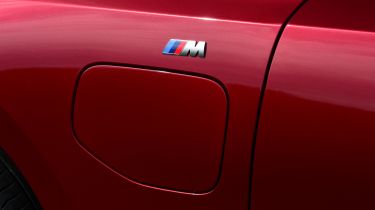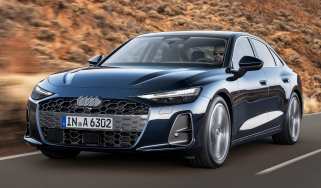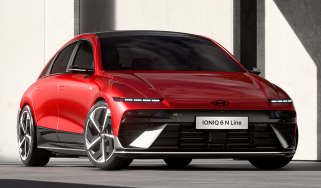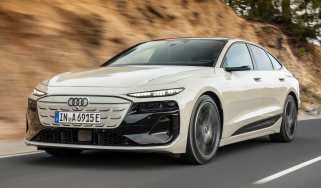BMW 5 Series review - MPG, running costs & CO2 emissions
“The BMW 5 Series is expensive to buy and likely expensive to insure, but fuel-efficient tech makes it frugal to drive”
All versions of the BMW 5 Series now come with some degree of electrification, with the entry-level petrol getting mild-hybrid assistance and the models above it getting plug-in hybrid tech to improve efficiency and lower emissions. There’s no longer a diesel option offered in the UK, despite its presence in the 5 Series lineup in the rest of Europe, which is something of a shame for drivers covering longer distances more frequently.
The plug-in hybrid models can cover short distances running on electric power alone, which is handy when driving around town. The 530e can drive on electricity alone for up to 63 miles, while the 550e’s official range is slightly shorter at up to 56 miles. For those reasons, the PHEVs get lofty official fuel economy figures but be aware that this is unlikely to be achievable in the real world unless you’re very frequently keeping your 5 Series charged up. In our testing of the 530e, we averaged around 50.6mpg with several longer journeys.
Speaking of which, charging speeds have been improved over the previous-generation 5 Series PHEV’s. Now the 5 Series is capable of up to 7.4kW charging which is twice as quick and allows for a zero to 100% charge in around three-and-a-quarter hours if you have a compatible home wallbox charger.
|
Model |
Fuel economy |
CO2 emissions |
|
BMW 520i |
45.6-48.7mpg |
131-140g/km |
|
BMW 530e |
403.5-470.8mpg |
13-17g/km |
|
BMW 550e xDrive |
282.5-353.1mpg |
19-22g/km |
For the first time, this generation of BMW 5 Series comes with a fully electric variant badged the i5. This is able to cover a much further distance than the plug-in hybrids can on electricity alone, and the i5 boasts a very usable range, though some rivals, such as the Tesla Model S can go even further at up to 405 miles to a charge.
|
Model |
Battery size |
Range |
|
BMW i5 eDrive40 |
84kWh |
362 miles |
|
BMW i5 M60 xDrive |
84kWh |
320 miles |
How much will the BMW 5 Series cost in tax?
The plug-in hybrid versions of the BMW 5 Series qualify for an annual discount on VED (road tax) that equates to £10 less than the equivalent petrol model, but it will incur the premium car tax surcharge for models over £40,000 as there are no versions of the 5 Series under this price. As a company car, however, the plug-in hybrids will be cheaper to finance, because of their low CO2 emissions putting them into a lower BiK (Benefit-in-Kind) tax bracket.
The cheapest to tax will be the standalone i5 electric model, because until 2025 it’s exempt, and from after that date it will cost the standard rate. Snap one up before April 2025 and it’s also free from the surcharge for cars costing over £40,000. As a company car it sits in the very lowest Benefit-in-Kind bracket, making it considerably easier to afford.
What will the BMW 5 Series cost to insure?
Insurance groups are yet to be confirmed for the latest 5 Series, but it’s a desirable, expensive car, and we’d expect it to sit in some of the highest groups out of 50. The old car sat between groups 38 to 46, but electric models tend to cost more to insure than their petrol or hybrid counterparts, so the new i5 will probably be the most expensive to insure.
Which Is Best?
Cheapest
- Name520i M Sport 4dr Auto
- Gearbox typeSemi-auto
- RRP£52,505
Most Economical
- Name530e M Sport 4dr Auto
- Gearbox typeSemi-auto
- RRP£60,045
Fastest
- Name550e xDrive M Sport 4dr Auto
- Gearbox typeSemi-auto
- RRP£77,195

















